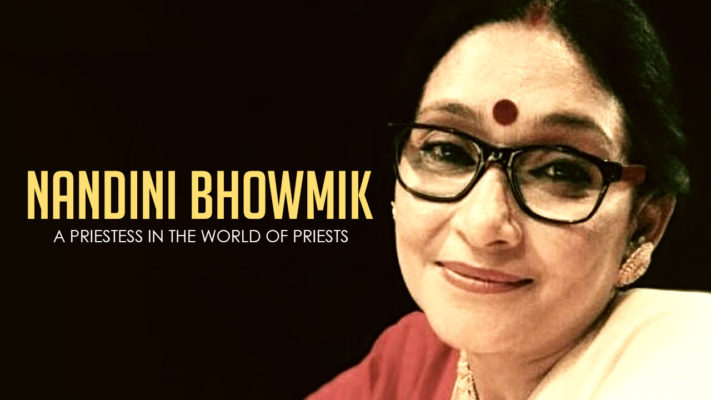
Shattering Gender Stereotypes And Conducting Marriages Sans Kanyadaan
Like any traditional Hindu marriage, the basic norms of Bengali Hindu marriage revolves around “Kanyaadaan” – the act of “gifting the girl” to the groom and his family. Amid the rhythmic sounds of conch shells and “ulu dhwani”, with clouds of smoke emerging out of the yagna pitha against the backdrop of a beautifully lit night sky, the scene is exceptionally magical. But exactly how “magical” or wonderful is the concept of “kanyadaan” itself? After all, women are not objects to be gifted – whether to the man she loves or to the man she has never seen in her life before! It is pretty sad to imagine how patriarchy has engulfed the entire society with its venomous fangs that most of us don’t have the capability of seeing through it. Thankfully, unlike most of us, some people have the capability, prowess and power to call a wrongful deed “wrong”, and act in their own ways to subvert the insane normativity as much as possible. One such person is Nandini Bhowmik.
A Priestess In The World Of Priests
Traditional marriages across all religions are solemnized in front of a priest. The very idea of having a priestess solemnizing a marriage is absolutely unknown to us – very nonchalantly we tend to accept the mutual exclusivity of priests and men. However, some people like Nandini Bhowmik show us that just like every other profession, being a priest is not a matter of gender – it’s a matter of knowledge and capability.
Recently, at a wedding held in Kolkata, West Bengal, the guests were in for a stark surprise. Unlike all other marriages they have attended, this marriage lacked any proud priest guarding and chanting Sanskrit hymns at the yagnapitha. Rather, a group of priestesses gracefully chanted hymns in Bengali, while others sang soulful Rabindrasangeet.

According to Nandini, she and her group of priestesses harbour a simple logic – to be able to present the wonderful Hindu culture and traditions to the youth sans its gender biases, ambiguity or orthodoxy.
Talking to The Better India, Nandini further said, “The knowledge in our scriptures cannot stay hidden behind an ancient language. The couples of this generation are asking questions about what and why they do in rituals. And, it is the responsibility of the priests to help them understand. That’s exactly what we are doing.”
Nandini is one of the numerous priestesses who has grouped together to form the “Shubham Astu” club. They work by redefining traditions with grace, shattering patriarchy and its innumerable myths imposing gender normativity and stereotypes.
Religion And Awareness Can Bloom Together!
In India, most of us are taught not to question certain things, one of them being the necessity and viability of Kanyadaan in a marriage or the reason behind all priests being male. It is as if the male gender is bestowed with the divine power of understanding the cosmic relevance of the world like no other. The fact that religion can also be explained and the worldly woes can be explained through religion is often overlooked by many of us. Thankfully, with the modern age and the waves of feminism rocking the world almost three times over, some of us have garnered the courage to question these idiosyncrasies.

To talk about Nandini Bhowmik, the lady did not just chance upon being a priestess. She had been a visiting faculty of Sanskrit at the prestigious Jadavpur University of Kolkata, alongside being a theatre actor.
Talking about her deviation from education to being a priestess, she said, “I was in college and our Sanskrit teacher, Gauri Dharmalal, had introduced a new and reformed way for female priests to perform Hindu rituals. So in a few years, we (a bunch of young Sanskrit teachers) began to pursue this. After a few years, with the help of few more fellow priestesses, I branched out, and together we created a more evolved script which was in-line with this generation.”
She further believes that like any other thing, the process of evolution applies to ancient religious scriptures as well. Hence, after being a priestess of her own might, she started simplifying the ancient texts in three languages – Bengali, Sanskrit, and English – so that everyone chanting the hymns or performing puja based on the hymns could understand them.
Slowly and steadily, they did away with the ritual of kanyadaan, thereby flagging off a new religious wave across West Bengal.
Father Refusing To Perform Kanyadaan Of Daughter
When we talk of Nandini Bhowmik, there might be numerous people who would tend to ask if anyone has at all believed in Bhowmik and her stance as a priestess. After all, not many people would volunteer to steer away from the most important part of traditional Hindu marriage from a wedding. A recent example of a father refusing to give his daughter in Kanyadaan created huge roar across India.
Talking about his decision, Dr Amlan Ray – father of the bride in question – says, “I took this decision some six months before the wedding day. And, that was one of the major reasons why I requested Nandini Bhowmik and her group to officiate the wedding. Contrary to common belief, which considers this to be against Hindu culture, a wedding without kanyadaan is not a new thing and is already mentioned in the scriptures.”
Further acknowledging people with the fact that the Rig Veda permits not one but eight different types of weddings, Dr Ray said, “And, most Hindu weddings today will not qualify to be a Brahma wedding, as it involves the wedding of one’s daughter to a Vedic scholar, among other strictures. In general, today most modern weddings come under the Gandharva marriage category, in which bride and groom know each other before marriage, and the marriage can be between different communities and castes without any barrier, and without the practice of kanyadaan.”
Lastly, giving due credit to Nandini and her team of priestesses, he said, “Unlike other purohits, these priestesses made sure that the experience was worth remembering. We were not just blindly following directions, but understanding the significance behind every verse, as all of it was in Bengali.”
It is surely high time for people to question their traditions. There is definitely nothing wrong with questioning – questioning is not humiliating the traditions. In fact, it is the only way one can get acquainted with the truest beliefs and identify the myths – thereby, living a life in its complete terms sans with distortions and myths promulgated by patriarchal woes.














